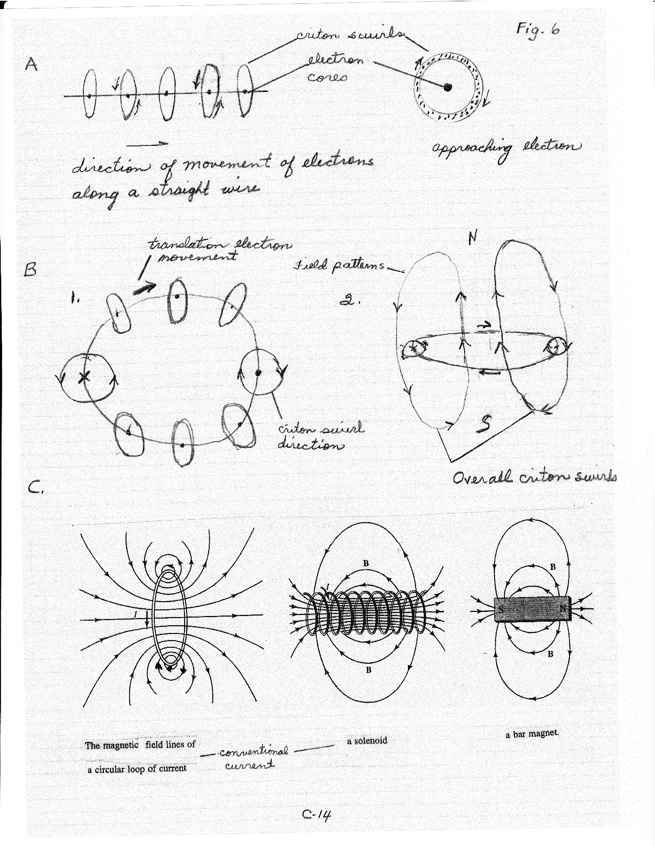

C-Fig. 6. The Creation of an Electromagnet
A. Electrons in straight-line motion. A current-carrying wire develops a concentric clockwise swirl of critons perpendicular to the direction of the approaching motion of electrons. See also C-Fig. 5.
B. Electrons in circular translational motion.
-
1. Diametrically positioned electrons in a circuit. Critons in portions of the swirls on the inside of the circular path of electrons have the same vectorial direction and are opposite to the vectorial direction of critons in the swirl portions on the outside of the circle. This accounts for the bipolar nature of the magnetic field. (x) indicates direction into the page and (.) indicates direction that is out of the page for electrons.
2. When electrons are forced to trace a circular path the mutual action of the swirls creates an overall secondary swirl pattern which is a magnet. Each additional electron increases the intensity of the field.
C. Magnetic field lines associated with electro and permanent magnets. (Conventional current direction is utilized.)
